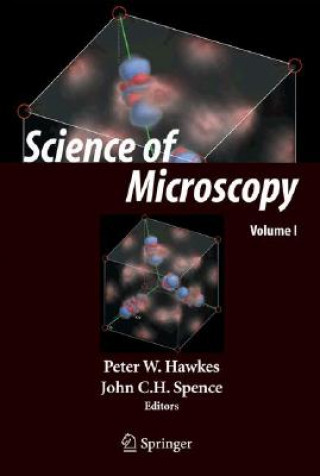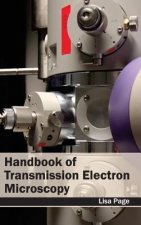
Kézbesítés
Vásárlási tanácsadó





Nem vált be? Semmi gond! Nálunk 30 napon belül visszaküldheti
 Ajándékutalvány
bármilyen értékben
Ajándékutalvány
bármilyen értékben
Ajándékutalvánnyal nem nyúlhat mellé. A megajándékozott az ajándékutalványért bármit választhat kínálatunkból.
Science of Microscopy
 Angol
Angol
 1356 b
1356 b
30 nap a termék visszaküldésére
Ezt is ajánljuk


This fully corrected second impression of the classic 2006 text on microscopy runs to more than 1,000 pages and covers up-to-the-minute developments in the field. The two-volume work brings together a slew of experts who present comprehensive reviews of all the latest instruments and new versions of the older ones, as well as their associated operational techniques. The chapters draw attention to their principal areas of application. A huge range of subjects are benefiting from these new tools, including semiconductor physics, medicine, molecular biology, the nanoworld in general, magnetism, and ferroelectricity. This fascinating book will be an indispensable guide for a wide range of scientists in university laboratories as well as engineers and scientists in industrial R&D departments.The examination of structure at the microscopic scale, between micrometers and angstrom units, has changed dramatically in recent decades. Many new types of microscopy have emerged, notably the many scanning-probe designs, some of which also allow manipulation of atoms to form wanted structures, while others now permit direct observation of moving proteins in liquids. The traditional electron microscope is being revolutionized by the arrival of aberration correctors and monochromators, which bring the resolution below the Angstrom and electron-volt level. The "laboratory in a microscope" concept is rapidly evolving, as nanostructures are observed forming under controlled conditions at atomic resolution (the carbon nanotube being the most famous recent example). Electron holography and scanning transmission electron microscopy have become indispensable tools of the semiconductor industry. The oldest form of microscopy, optical microscopy, has been rejuvenated by the development of fluorescent, confocal, and two-photon variants. Analytical Scanning X-ray microscopes and Photoemission microscopes at synchrotons now routinely provide spatially resolved electronic structure maps. Tomographic imaging has vastly increased the information content of practically all forms of microscopy, as reflected in the award of a recent Nobel Prize. Molecular biology is benefiting enormously from progress in this technique. Most of these developments are responses to the urgent needs of researchers to characterize new useful nanostructures at the atomic level.§In Science of Microscopy, comprehensive reviews set these innovations in the context of microscopy today. Each contribution presents a form of microscopy or occasionally a microscopic technique, and provides information about the instruments involved and their areas of application. The contributions are written in such a way that the reader can understand how the various instruments function, their strengths and weaknesses, and whether they are suitable for a particular scientific investigation. Science of Microscopy will be an indispensable guide to both a wide range of scientists in university laboratories and to engineers and scientists in industrial R&D departments. §Key Features§Full-length essays on each type of instrument or techniqueApplications to both materials science and the biomedical sciencesEssay-length treatment by respected experts in each fieldCovers the latest developments as well as background information for the beginning microscopist
Információ a könyvről
 Angol
Angol
Kategória




 Hogyan vásároljunk
Hogyan vásároljunk

























